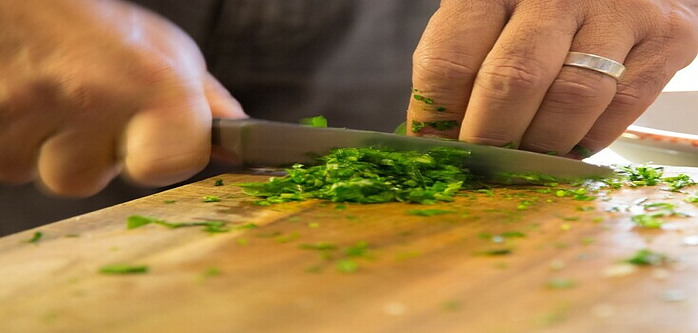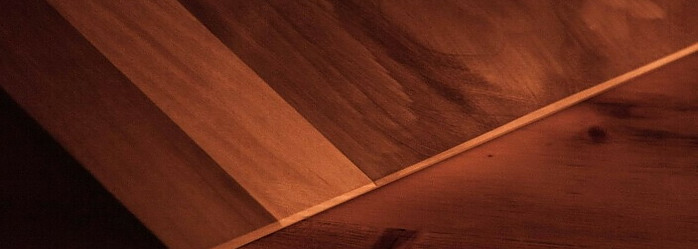 I’m here to help you with one of the unsung heroes of the kitchen: the cutting board. It’s not just a slab of material; it’s the trusty platform for your slicing, dicing, and chopping adventures. Now, I’m going to walk you through why choosing the right one matters and how it’s the foundation for kitchen safety and culinary success.
I’m here to help you with one of the unsung heroes of the kitchen: the cutting board. It’s not just a slab of material; it’s the trusty platform for your slicing, dicing, and chopping adventures. Now, I’m going to walk you through why choosing the right one matters and how it’s the foundation for kitchen safety and culinary success.
You’re going to find out about the diverse world of cutting boards. They come in all shapes and sizes, tailored for a variety of tasks. From heavy-duty butchering to delicate vegetable chopping, each type has its place. But it’s not just about function; form—how it fits your kitchen aesthetics and storage—plays a role, too.
Here’s a teaser: there are boards designed for bread that catch crumbs while others have juice grooves for carving juicy meats. Your choice should align with the types of food you frequently prepare. This choice impacts everything from food safety to the enjoyment of your meal prep experience.
Your cutting board is at the front line of food hygiene. Choose something that resonates with you and is easy to keep clean because a contaminated board is a quick way to ruin what should be a delightful cooking endeavor. Remember, a well-chosen cutting board is a champion of cleanliness and an advocate for the longevity of your knives.
When we segue smoothly into what these boards are made from in the next section, you’ll understand why materials matter so much. It’s not just about aesthetics; it’s about performance and safety. So, coming up next: ‘Breaking Down Cutting Board Materials: What’s Best for You and Your Knives?’—where we’ll dive into the nitty-gritty of each material and its impact on your kitchenware.
 Breaking Down Cutting Board Materials: What’s Best for You and Your Knives?
Breaking Down Cutting Board Materials: What’s Best for You and Your Knives?
You’ve decided a cutting board is a must-have in your kitchen arsenal. But wander down the kitchen aisle, and you’ll be faced with a variety of materials, each claiming superiority. I’m going to help you navigate through these options, focusing on what’s best not only for your culinary needs but also for the well-being of your knives.
Let’s start with wood. Wooden cutting boards are classic and durable. They’re kind to your knives, won’t dull the blades quickly, and can double as a charming serving platter. However, they require more maintenance than other types, as they’re prone to warping if not properly cared for. You’ve also got bamboo, which is similar to wood but somewhat harder. It’s a fantastic choice for the eco-conscious, but just don’t forget that it can be a bit tougher on your knives.
Plastic boards are a modern kitchen favorite. They’re lightweight, dishwasher-safe, and often less expensive. But here’s something to consider: They can harbor bacteria in knife scars if not cleaned well, and while they’re easier to maintain, they can wear down your knives quicker than wooden boards.
Then there are glass and composite cutting boards. Glass boards are easy to clean and resist stains like no other. Yet, they’re notorious for blunting your kitchen knives. Composite boards, on the other hand, attempt to strike a balance, offering a tough, knife-friendly, and low-maintenance surface.
When it comes to safety, you can’t ignore the potential for bacterial multiplication. Wood has natural antibacterial properties, while plastic can be sanitized in the dishwasher. Choose something that resonates with you and your cooking style, but always keep food safety in mind.
The bottom line? The material of your cutting board affects more than just its longevity; it impacts knife maintenance, food safety, and your cooking experience. Choose wisely, and your cutting board can be a lifelong kitchen partner.
The Care and Keeping of Your Cutting Board to Ensure Longevity
A cutting board is an investment in your kitchen’s functionality. Like any investment, it needs some care to maintain its best condition. Let’s tackle how you can keep your cutting board looking great and working hard for years to come.
No matter what material your cutting board is made from, routine cleaning is critical. If you’ve chosen a wooden or bamboo board, you’re going to want to avoid the dishwasher. Hot water and detergents can warp and crack these natural fibers. Instead, wipe them down with warm, soapy water after each use and rinse thoroughly.
For plastic boards, the dishwasher is usually a safe bet since they’re more resilient. But remember, high heat can still warp them over time, so you might occasionally want to hand wash to play it safe.
Drying your cutting board properly is just as important as washing it. Standing water is the enemy here – it’s a breeding ground for bacteria and can lead to warping or splitting, especially in wood boards. After washing, stand your board up and allow it to air dry completely before putting it away.
Every few months, it’s a good idea to treat your wooden or bamboo board with a food-grade mineral oil or beeswax. This isn’t just about aesthetics—oiling helps repel water and prevent staining, keeping the wood supple and preventing cracks where bacteria love to hide.
The key to any board’s longevity is catching problems early. Look for signs of wear like deep cuts or warping. These can be both a safety hazard and a harbinger of a shorter lifespan for your board.

Reviving and Upcycling: What to Do with Worn-Out Cutting Boards
You’re going to find out about breathing new life into your old cutting boards. I’m going to share how you can assess if your cutting board can be restored and give you some handy tips for bringing it back to its former glory. It’s not just about saving money; it’s also about preserving a piece of your kitchen’s history.
For wooden cutting boards, if they’re looking dull or have minor scratches, sanding them down and applying a food-safe mineral oil can work wonders. You can always adjust your approach down the road, but starting with a light sanding and seeing the transformation is often all it takes.
Don’t worry too much about plastic and composite boards; small cuts and grooves can usually be removed with a kitchen scrub sponge. However, if they’ve really seen better days, consider choosing something that resonates with you, like upcycling them into something new.
There’s a lot of opportunity in repurposing old cutting boards. An old wooden board can become a rustic serving platter, a wall art piece, or even a shelf for your herb garden. With plastic boards, getting creative could mean turning them into quirky coasters or colorful garden markers.
Just don’t focus too much on perfection when upcycling. Your first attempt doesn’t need to be your last. It’s all about extending the useful life of an item and preventing it from ending up in the landfill too soon. Now, this ties directly into the next section where I’m going to talk about making sustainable choices in both your cutting board selection and how you maintain them.
The Eco-conscious Chef: Sustainable Choices in Cutting Board Selection and Maintenance
Choosing a cutting board goes beyond just functionality and aesthetics; it’s about making environmentally responsible decisions that align with your values. When looking for a new cutting board, consider materials like bamboo or recycled composites, which offer durability while being kind to the planet.
In my opinion, maintenance is just as crucial as the initial choice. By caring for your cutting board properly – cleaning it correctly, oiling it as needed, and storing it appropriately – you significantly extend its life. This not only saves you money but also minimizes your environmental footprint.
Finally, when it’s time to retire your cutting board, think about its afterlife. Although not all materials are easily recyclable, wood and bamboo can often be upcycled or composted. Check with your local waste management for plastic and composite recycling options to ensure a responsible end to your cutting board’s service.
Kathie
cutting boards amazon https://amzn.to/3HbZB8H